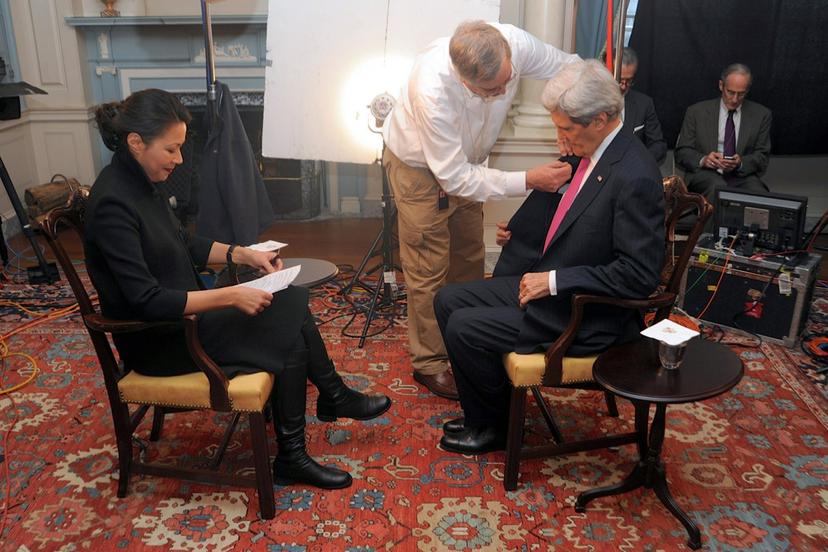Television

Background
Modern television developed from experiments with electricity and vacuum tubes in the mid-1800s, but it was not until 1939, when President Franklin Roosevelt used television to open the New York World's Fair, that the public realized the power of television as a means of communication. Several television stations went on the air shortly after this demonstration and successfully televised professional baseball games, college football games, and the Republican and Democratic conventions of 1940. The onset of World War II limited the further development of television until after the war was over.
Since television's strength is the immediacy with which it can present information, news programs became the foundation of regular programming. Meet the Press premiered in 1947, followed by nightly newscasts in 1948. People who bought early TV sets just for the novelty of it, or to gather everyone around the tiny, snowy screen to see a favorite niece sing on a locally broadcast talent show, were soon rewarded by the rapid expansion of the industry in the 1950s. The Federal Communications Commission lifted a freeze on the processing of station applications, and the number of commercial stations grew steadily, from 120 in 1953 to more than 1,758 stations in 2020.
It was in the 1960s that television's power became most apparent: Together the country mourned the death of President Kennedy; witnessed the murder of his alleged assassin, Lee Harvey Oswald, by Jack Ruby; and formed opinions on the Vietnam War based on live TV news footage. The successes and failures of NASA programs brought viewers together, from the first steps on the moon to the famous, near-fatal mission of Apollo 13 and from the first space shuttle launch to the tragic explosions of the Challenger and Columbia. On September 11, 2001, television broadcast live images of the terrorist attacks on the Pentagon and the World Trade Center around the globe, and nearly every channel in the United States preempted regular programming to provide coverage of the story. In 2019, there were an estimated 120.6 million TV households in the United States. According to the Television Bureau of Advertising, about 96 percent of U.S. households own TV receivers.
The big three networks (NBC, ABC, and CBS), which, along with PBS, reigned for many years as primary sources of information and entertainment for millions of people in the United States, have consistently lost viewers to cable, satellite TV, the Internet, computer games, and video rentals. Network TV viewership drops every year, but this trend hasn't stopped new networks, such as FOX and the CW, from developing and competing. Some reports find that personal computer and Web use may actually increase the number of TV viewers, while others indicate that Internet use causes people to watch less television. A report on Internet and other media use by Nielsen found that among the general U.S. population television remains more popular than the Internet and radio, but traditional TV viewing by the 18- to 24-year-old population has been steadily declining the past few years. Nielsen Wire reports that TV viewership in 2008–2009 was at its highest peak since 1991, due to people having more televisions (about 2.8) in each household and having more channels and content. Also, more people began using DVRs (digital video recorders) to record TV shows for later viewing.
A major recent trend in television is streaming. Services, such as Netflix and Hulu, allow subscribers to select programs on demand and watch them immediately on TVs or computers. In 2013, the success of Netflix's House of Cards and several other original programs demonstrated that streaming services mark a major milestone in the evolution of television. Since then Amazon, Hulu, Netflix, and other streaming services have produced a flood of original content. There are also free on-demand TV providers that enable viewers to search for TV shows and movies at any time. On-demand TV is delivered via Internet connection.
